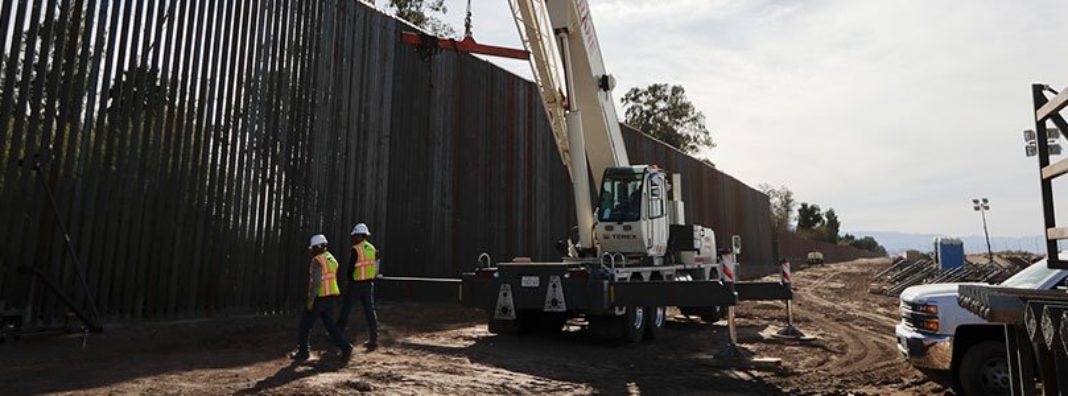
In his 2019 State of the Union address, President Trump outlined a moral duty to build a wall along the southern U.S. border to prevent illegal immigration. But it’s not likely that he’ll receive congressional approval or funding for it. Democrats included no funding for a wall in their recent budget proposal, and with only a few days left until the January budget compromise ends, it’s likely that a return to a government shutdown is just around the corner.
But there are policy options available that could satisfy both sides. New research suggests that although a border wall is unlikely to prevent illegal immigration, there are other policy changes that can prevent the need for it in the first place.
One way to estimate the effects of a wall is to look at past build-outs along the southern border. Researchers from Stanford and Dartmouth examined the Secure Fences Act of 2006, which built an additional 548 miles of wall, on top of 100 miles already present, across the southern border of the U.S. Their research showed that the wall only reduced the number of Mexican workers present in the U.S. by 0.6 percent.
In addition, the researchers found it’s likely to cost more to build the wall than it will benefit U.S. workers. The cost per person for the 658-miles wall was estimated at about $7. On the other hand, the ones who benefited, only a portion of U.S. workers, gained less than 40 cents. Given this research, a border wall is unlikely to stop illegal immigrants from entering the country while being a net loss to the U.S. economy as a whole.
Even if walls prevented illegal immigration in the past, there’s no guarantee they will do the same today. In fact, the primary sources of illegal immigration are different today than they were in 2006. Research from the Center for Migration Studies shows that visa overstays “significantly exceeded illegal border crossings during each of the last seven years.” Of all illegal immigrants in 2017, 62 percent first entered the country with legal visas and stayed in the U.S. after their visas expired. People who enter legally, but then stay past their visa’s expiration date won’t be deterred by a wall.
A more cost-effective and promising solution to the problems that illegal immigration creates is to streamline immigration processes. There are at least two ways to do this without requiring a drastic overhaul of the current system.
The first is making processing asylum claims easier. The government shutdown meant the cancellation of almost 43,000 immigration court hearings, further burying immigration judges who are already overburdened. Before the shutdown, each judge was responsible for almost 2,000 cases apiece, and now they even are further behind. One simple fix for this judicial backlog is to allow the Department of Homeland Security’s (DHS) staff that already handles initial processing for asylum cases to complete cases that pass the initial screening instead of handing off those cases to immigration courts.
The second is through immigration tariffs. The tariff system, which immigration policy expert Alex Nowrasteh recently published a new report on, would sell a new visa category to potential immigrants, called “gold” cards. Foreigners who obtained a gold card would be allowed to work and live in the U.S. without directly leading to citizenship. The system would create a new and clear line for people who want to come to the U.S. to work while bringing financial benefits to the country. Nowrasteh calls the plan a “fiscal double whammy.” The first benefit it brings in arethe additional tax dollars.
Because most immigrants put more into public coffers over their lifetimes than they take out, the immigration tariff system would be a boon to government funds. The second is the actual tariff revenue itself. The revenues, according to the new report, could range from $1,000 to as much as $300,000, depending on the relevant skills of the individual buying the gold card.
At a more fundamental level, research shows that immigrants are a boon to the areas that they move into. More people in an area means more shoppers at local stores. In turn, local businesses can then expand and hire more workers. And this isn’t just abstract economic theory. Research by economists Giovanni Peri and Andri Chassamboulli shows exactly these results using data from the U.S. and Mexico.
Finding solutions to illegal immigration that work for everyone is a vital part of resolving the government shutdown cycle we now find ourselves in. Empowering DHS staff to grant asylum claims shrinks bureaucratic hurdles. They can go from middlemen to part of the solution to the growing backlog of asylum claims.
While streamlining applications will deal with the current problems, immigration tariffs will prevent future obstacles. The gold card for immigrants seeking to work in the U.S. will prevent the backlog from growing again while the funds will be available to reinforce existing border protections and the Border Patrol. Policymakers should explore policies like these that benefit everyone and will avoid another government shutdown.


 Daily Caller
Daily Caller